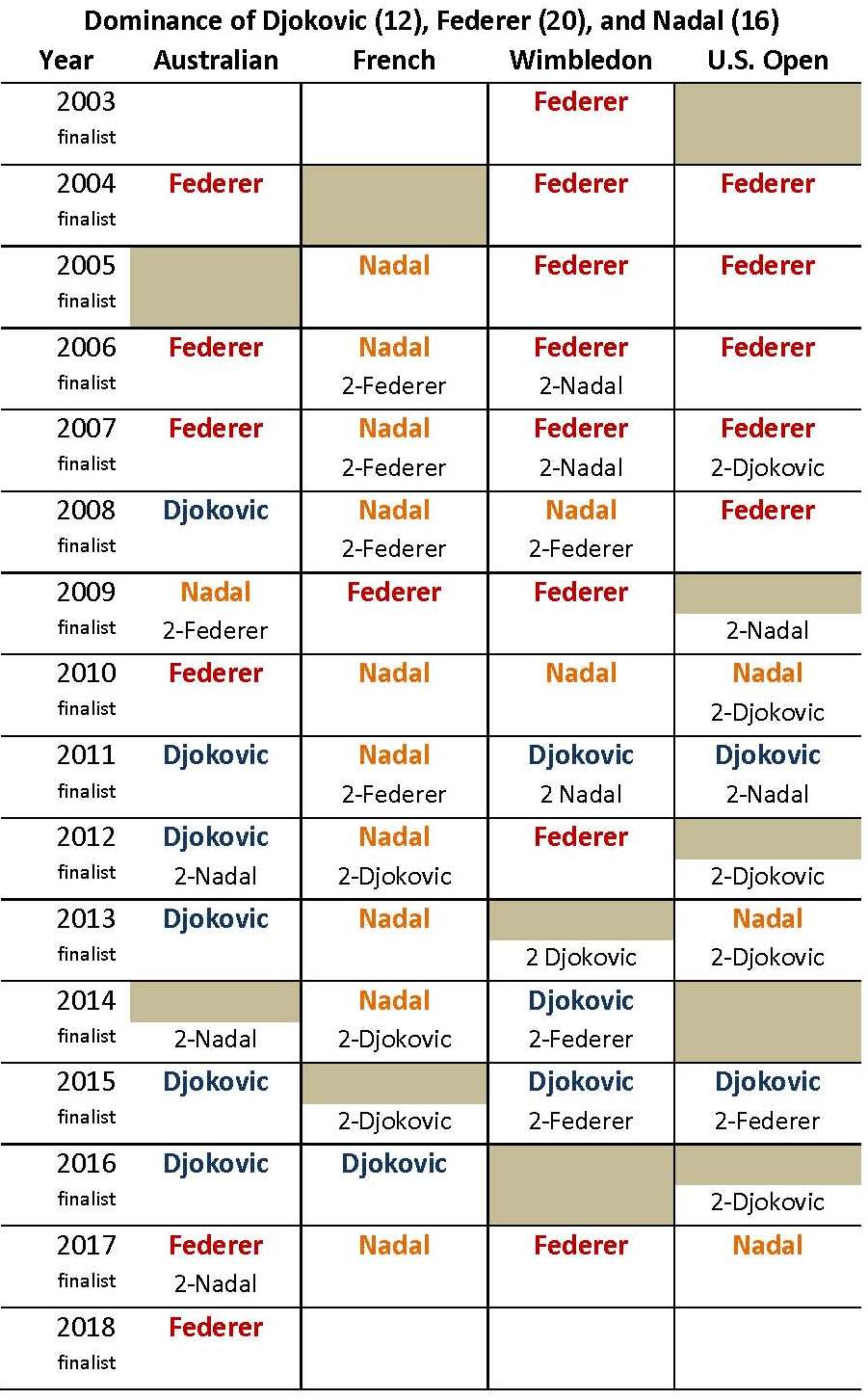One of the great joys of being a tennis spectator is the Grand Slams. Each slam has a unique personality and every year they are many great individual stories. It is like having four Super Bowls every year.
The 2018 Men’s Australian Open was no exception. On the men’s side, the top story was Roger Federer’s five-set victory over Marin Cilic in the finals 6-2, 6-7(5), 6-3, 3-6, 6-1. This was Federer’s 20th Grand Slam singles victory.
Federer won his first Grand Slam at Wimbledon in 2003. That was eons ago! In 2003, George Bush had been president for two years, Saddam Hussien was captured, Lance Armstrong won his fifth Tour de France. Camera phones were introduced in 2003 and cargo pants were the rage.
At the time, expectations for Federer were low because he was an up-and-coming player. Six months later, he won his first Australian Open. Fourteen years later, Federer is still dominating. His victory over Cilic was his sixth Australian Open championship.
The 2018 Men’s Australian Open saw another lackluster performance by the American men. The top American performances were by unseeded players Ryan Harrison, who went 2-1, and Tennys Sandgren who was 4-1. Harrison lost to #6 seed Marin Cilic. Sandgren lost in the quarters to Chung, an unseeded player from Korea. Unfortunately, Sandgren’s playing accomplishments were overshadowed by comments he had previously made on social media.
The 3 seeded Americans had a tough tournament. Sam Querrey, #13, won a round while Jack Sock, #8, and John Isner, #16, were one and done.
The seven first round losers included John Isner, Kevin King, Jack Sock, Steve Johnson, Donald Young, Jared Donaldson, and Frances Tiafoe. In fairness to the men, King was defeated by #15 seed Tsonga; Johnson was ousted by fellow American, Kudla; Young fell to #14 seed Djokovic, Donaldson lost to #21 seed Ramos-Vinolas and Tiafoe fell to #12 seed Del Petro.
The four second round losers, who were 1-1, also faced tough draws. They included MacKenzie McDonald, Denis Kudla, Tim Smyczek, and Sam Querrey. Kudla lost to #5 seed Theim and Donaldson lost to #21 seed Ramos-Vinolas.
In total, the 13 American men won 10 matches while losing 13. Harrison and Sandgren won 6 of the 10 matches. Overall, the performance by the American men was about the same as 2017, when 14 men were 10-14.
Hoping for a stronger performance from the younger players in the French Open starting May 27th.



